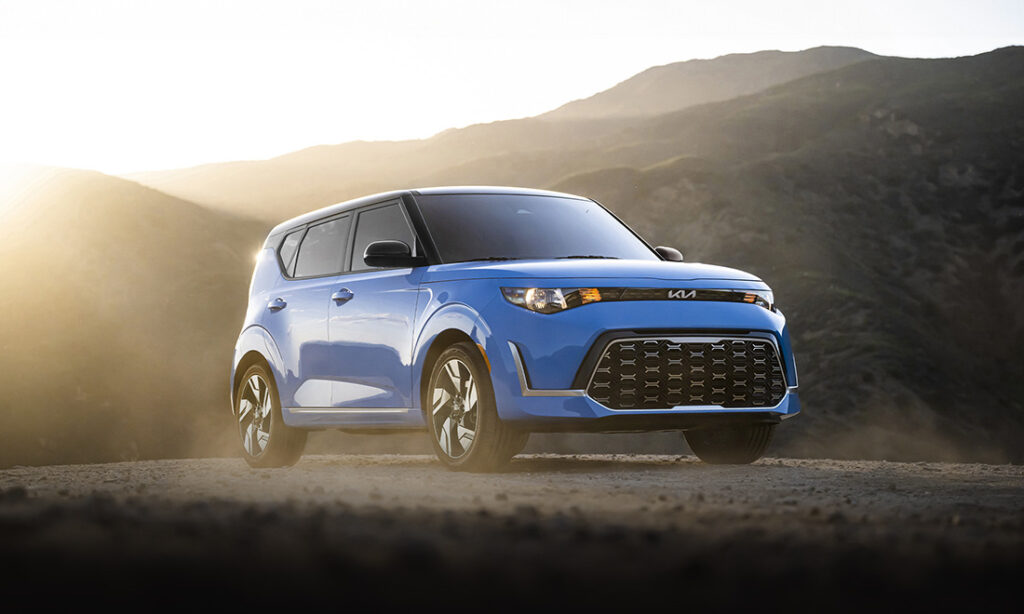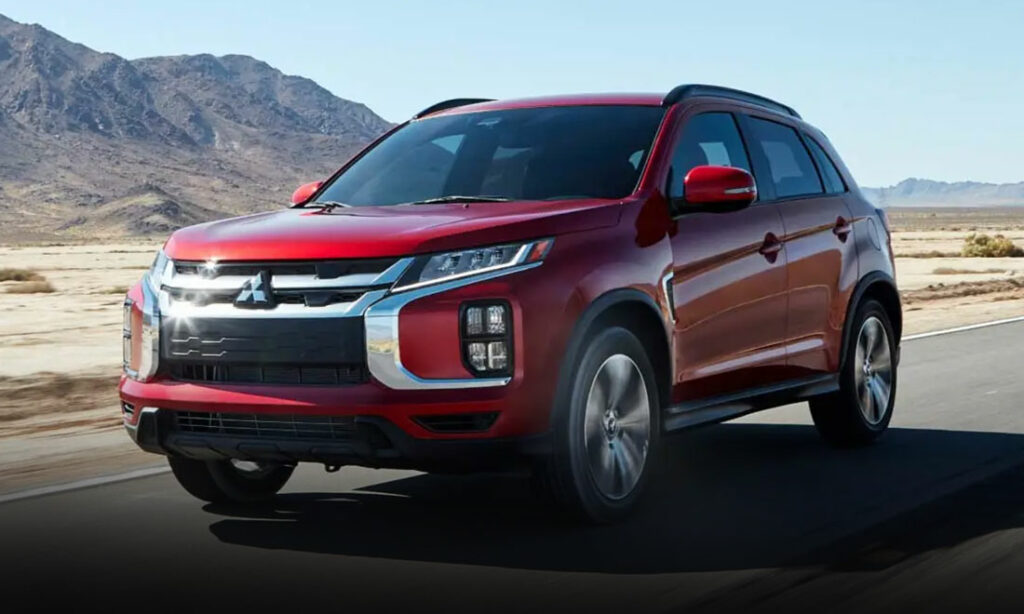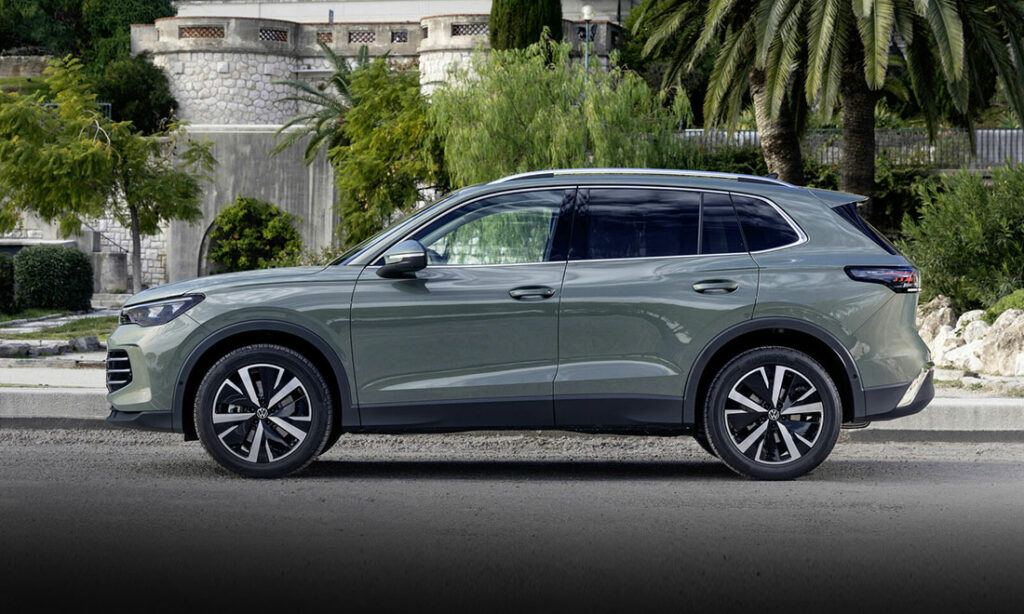The second-generation C2 Chevy Corvette was faster, lighter, and more powerful than ever.
The Modern Corvette Arrives
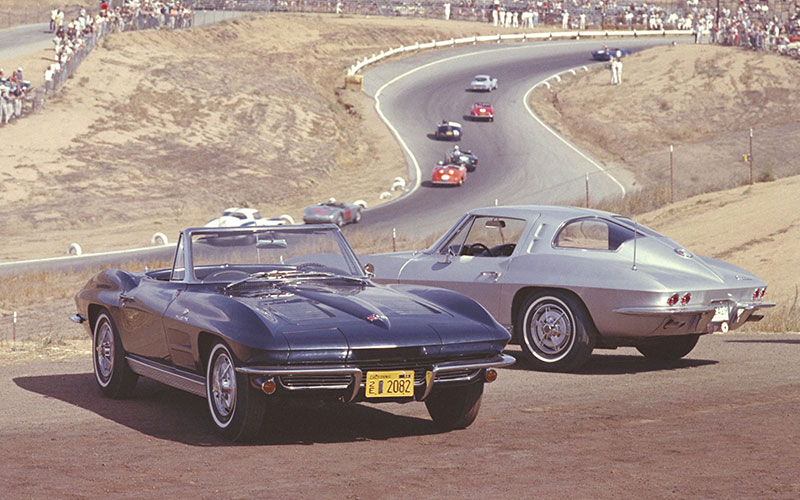
The second-generation C2 Chevy Corvette is in many ways the first modern Corvette, designed and purpose-built to be America’s premier sports car. Recall that prior to the Corvette, sports cars were almost exclusively a European phenomenon, and even the C1 Corvette itself had to wait two years to get a proper V8 under the hood. It had taken the urgings (and hard work) of GM engineer Zora Arkus-Duntov to get the Corvette the performance it needed to succeed both on the racetrack and in the showroom.
C2 Development

And so it was Akrus-Duntov, along with Bill Mitchell and Bob McLean, who was tasked with developing the second-generation of the Corvette. Midway through the first generation, the GM engineers were already hard at work at the test track on prototypes like the Q-Corvette, Sting Ray Special, and Corvette Super Sport. There was even the single-seat, open-wheeled CERV 1 concept that employed a mid-engine design. If given his druthers, Akrus-Duntov would have liked to make the next Corvette mid-engined, but the costs involved for such a reimagining proved too great.
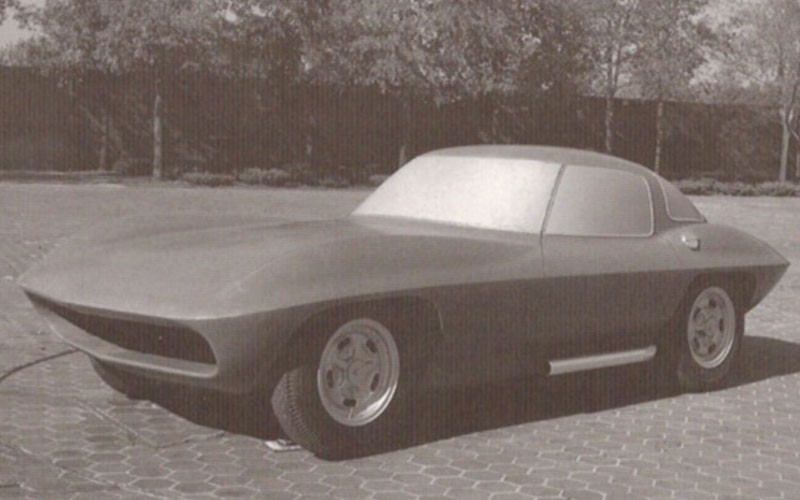
Most important of all these early concepts was the XP-720, which employed designs and lessons learned from earlier prototypes. It’s stated goal was to improve both the interior comforts of the Corvette while at the same time making strides in performance. The C2 project was the first time the Corvette’s aerodynamics were rigorously tested in a wind tunnel. The result was a sleek body design that also made a significant aesthetic departure from the prior generation.
Design
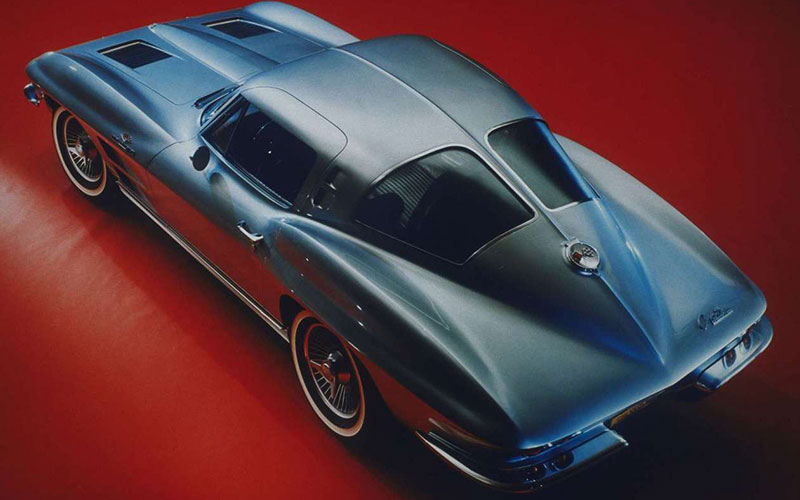
The C2 Corvette looks miles apart from the first-generation car. The hood is longer, the rear is a fastback design, and, for the 1963 model year at least, the rear window has a split design. The quad headlights were now of the pop-up variety (which remained a Corvette design cue until the C6). The doors were cut into the roof to ease ingress and egress. The C2 used twice the steel compared to the C1, but used thinner fiberglass paneling, making the new car actually lighter than the prior one.
The second generation of the Corvette would get a number of improvements. Fuel-injection, the exotic province of cars like the Mercedes-Benz 300 SL, was a increasingly popular option on the Corvette (first introduced back in 1957). The rear suspension was upgraded to make the car fully independent. Hydraulic power steering and optional power brakes were added too. In development, engineers had wanted functional hood scoops, but due to cost constraints, they ended up fake. By moving the engine and seats further back and closer together, the smaller C2 ended up with more interior space compared to the C1.
1963 and 1964
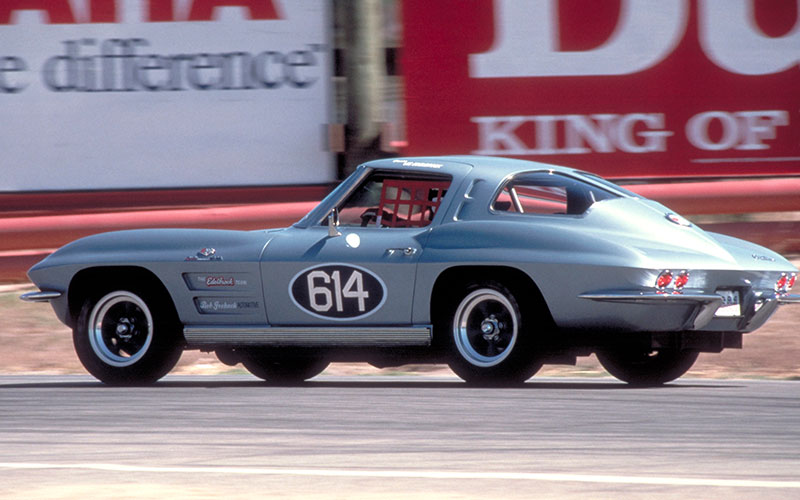
The C2 Chevrolet Corvette debut in August of 1962 for the 1963 model year. It offered a range of 327 CID (5.4L) V8s which produced anywhere from 250 to 360 horsepower (when fuel injection was optioned). A three-speed manual came as standard, but either a two-speed Powerglide automatic or a four-speed manual could be optioned, the latter only available with the more powerful 340 and 360 horsepower V8s. Options included air conditioning, AM/FM radio, leather upholstery, and power windows.
Also for 1963, Arkus-Duntov and his team built the first of the now storied Z06 racing-focused variant. The Z06 package included suspension upgrades, fuel-injection, a four-speed manual, a limited-split differential, front sway bar, and a 36.5-gallon fuel tank. The last of these features was intended to help cut down on mid-race fuel stops. Just 199 of the ’63 Corvette Z06s were built.
Aside from minor cosmetic alternations, the 1964 model year didn’t change much for the C2 Corvette. But of note was the discontinuation of the Z06 variant. Though many of its performance features could now be optioned.
1965
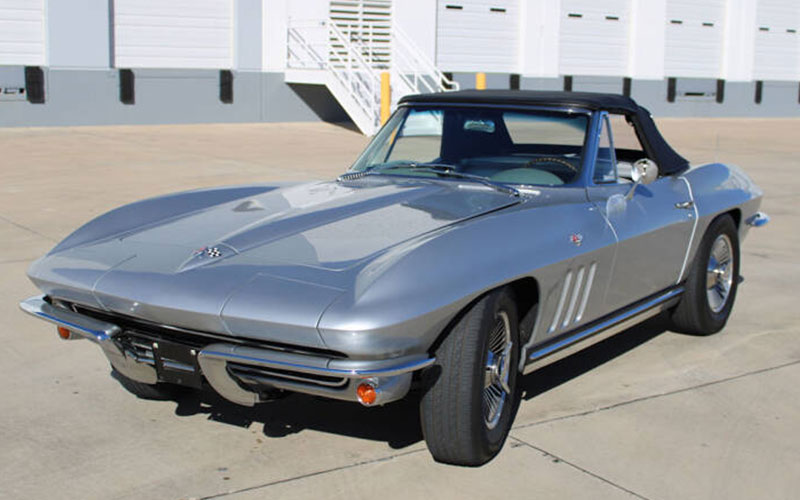
The 1965 model year received more significant updates. The exterior saw a number of changes that included a newly smoothed out hood, gone were the faux vents of prior years. But the new front fenders had vents that were now functional. Completing the new look was a new grille, a teak wood steering wheel (as opposed to the faux walnut of the earlier cars), and optional side pipe exhaust.
More impactful were the mechanical changes to the car. For 1965, the Corvette receive disc brakes at all four wheels. A new engine was also in the mix, a 396 CID (6.5L) big block V8 making a prodigious 425 horsepower. For cars thus endowed, a domed hood was used to accommodate the larger engine. This would be the only year for the 396 before the arrival of yet more V8s.
1966
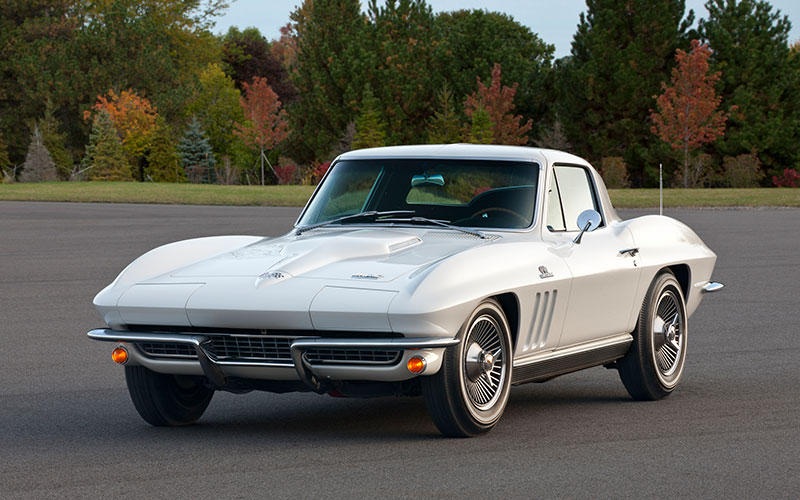
Things continued to improve apace for Corvette’s 1966 model. A new bevy of 427 CID big block V8s were now on the table, making between 390 and 425 horsepower and an impressive 460 lb-ft of torque. With the 427 came a firmed-up suspension and the four-speed manual transmission. Options for the 327 were trimmed down from five engines to just two.
As for the exterior, there was a new egg crate grille and additional Sting Ray badging added to the hood and rear deck. Some 60 percent of ’66 models were optioned with side pipe exhausts.
1967
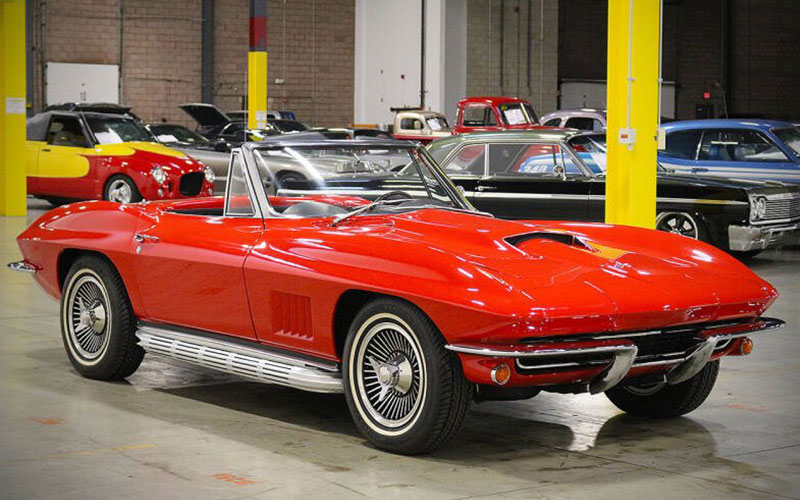
Despite the short run, the C2 Corvette went out on top with perhaps its finest iteration for the 1967 model year. Cosmetic changes smoothed and simplified the cars looks with alterations made to the wheels and rocker panels, and a new reverse light was added above the license plate. Minor updates to the car’s interior were also made.
Again, the real excitement was under the hood, which, incidentally, sported new hood scoops. New 427s were added and now ranged from 390 up to 435 horsepower. A new racing variant, the L88, was also built. Its 427 CID was tuned to an official 430 horsepower, but the real number, by all accounts, was closer to 550 horsepower. The engine ran on expensive 103 octane. The L88 was intended as a no-frills track monster and deleted luxurious items like air conditioning, the radio, and power steering. In their place came an upgrade suspension, Positraction differential, and power brakes. The L88 made our list of the hottest muscle cars on the market.
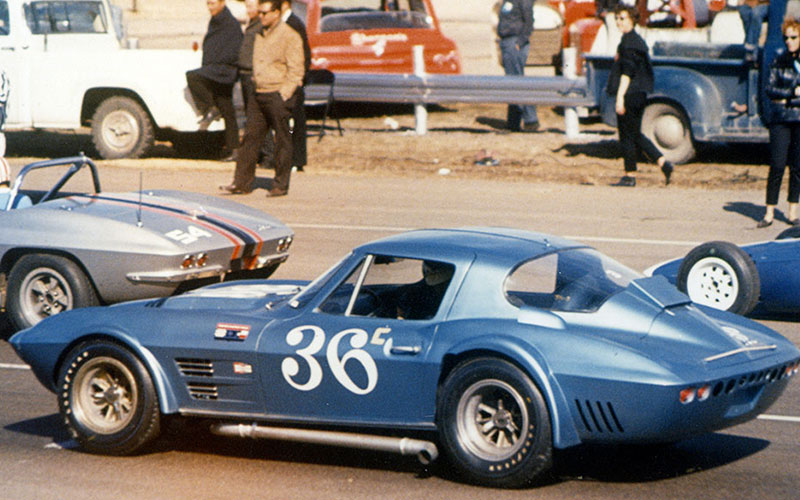
Even more rare than the L88 was the Grand Sport Corvette. A Corvette even more racing focused than either the Z06 or the L88, the Grand Sport featured larger fenders for bigger tires, lighter fiberglass body paneling, side pipe exhaust, hood gills for additional cooling, and to top things off, a unique all-aluminum small-block 377 CID (6.1L) V8 that, like the L88’s motor, made well over 500 horsepower. Just five Grand Sport Corvettes were built, well short of the 125 required for official homologation.


